North Queensferry Census Records
Introduction to the North Queensferry Census Records
History of the National Census
Collecting census records
Viewing census records today
Viewing North Queensferry Census records on this website
Searching North Queensferry Census records on this website
History of the National Census
At the end of the 18th century, it became clear to the UK government that it would be useful to know the population of the country.
One of the concerns was the fear that the demands of a growing population might outstrip the country’s resources.
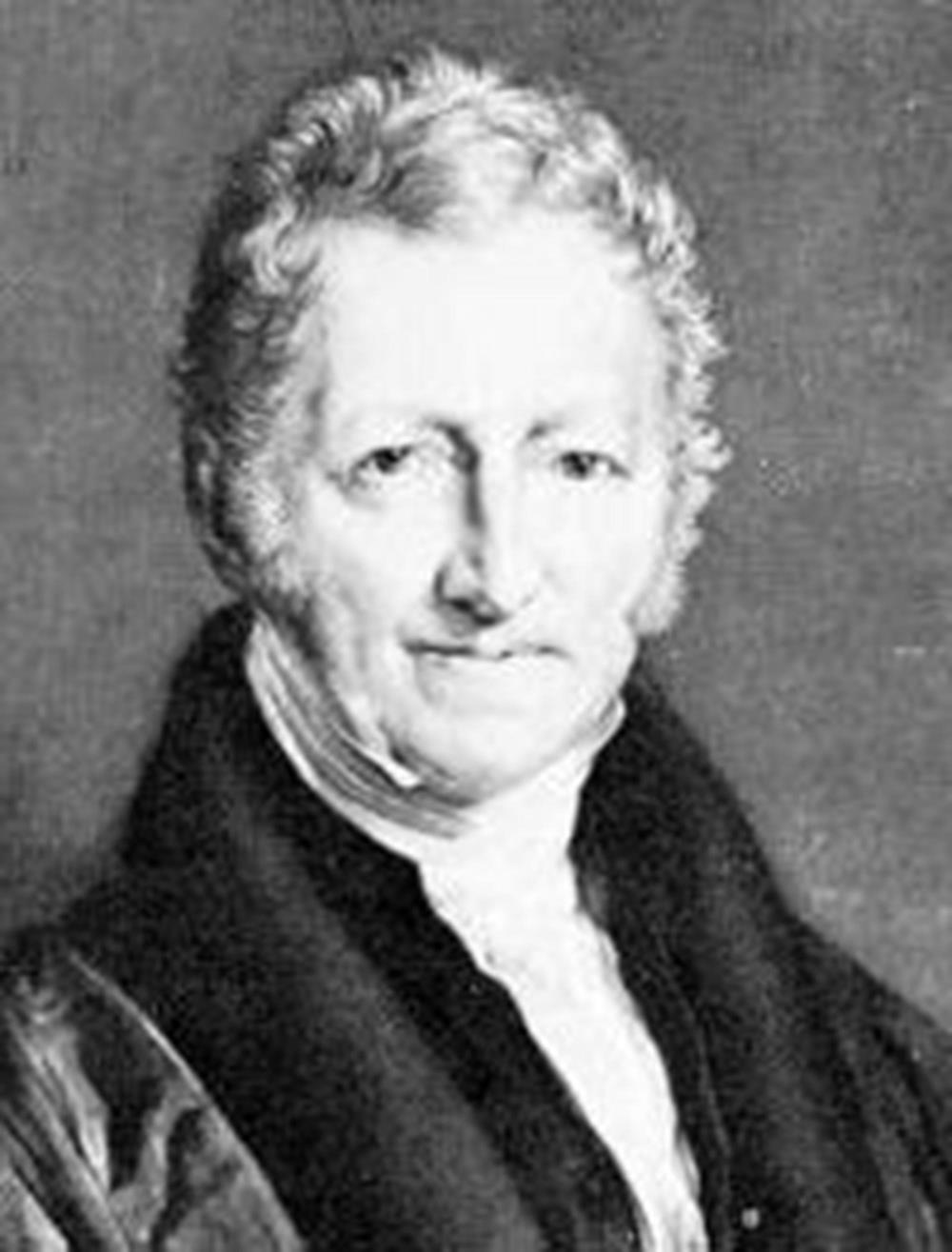
In 1798, the economist Thomas Malthus published “An Essay on the Principle of Population.”
This predicted that the growing UK population would outstrip the available food supply, leading to a decrease in food per person.
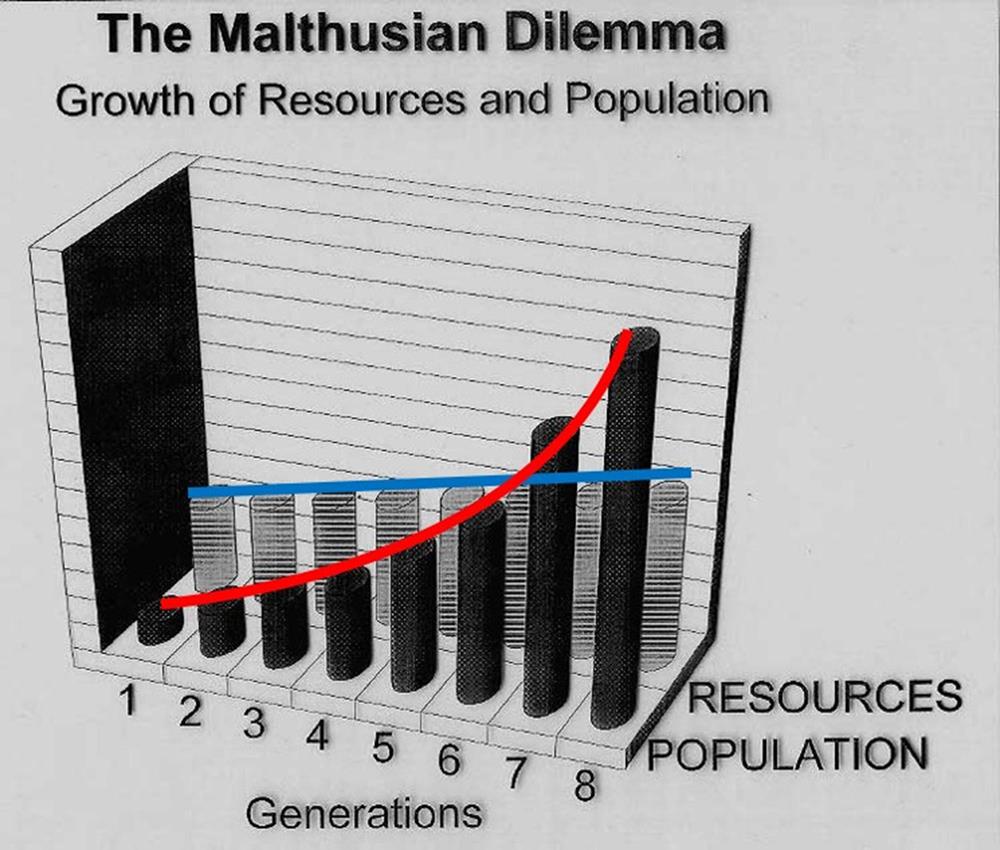
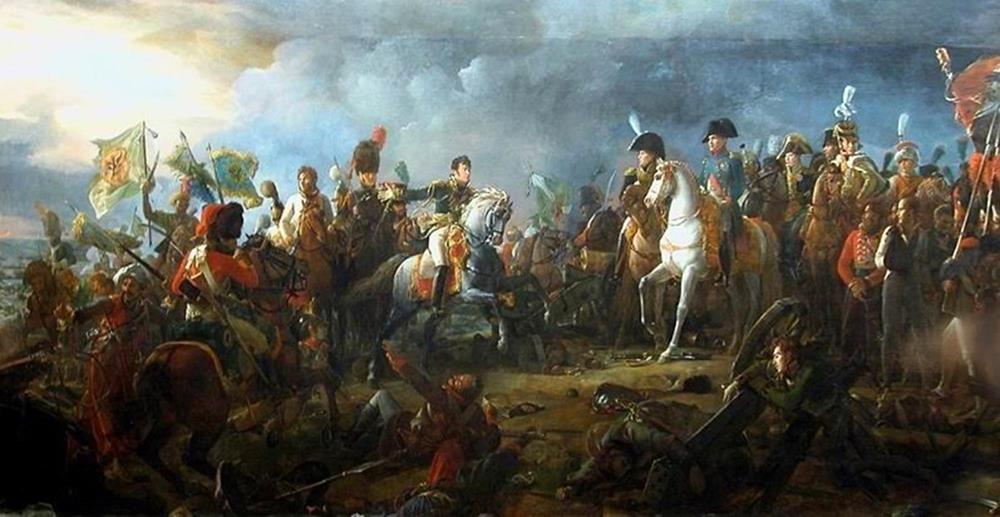 The Battle of Austerlitz
The Battle of Austerlitz
Another concern was the scale of the wars fought during Napoleon Bonaparte’s imperial rule over France (1804–1815). These wars revolutionized European armies and artillery, and took place on a scale never before seen, mainly due to the application of modern mass conscription.
The British Government realized that it did not know how many troops it could raise through conscription. A national census was needed to determine the number of men of fighting age available.
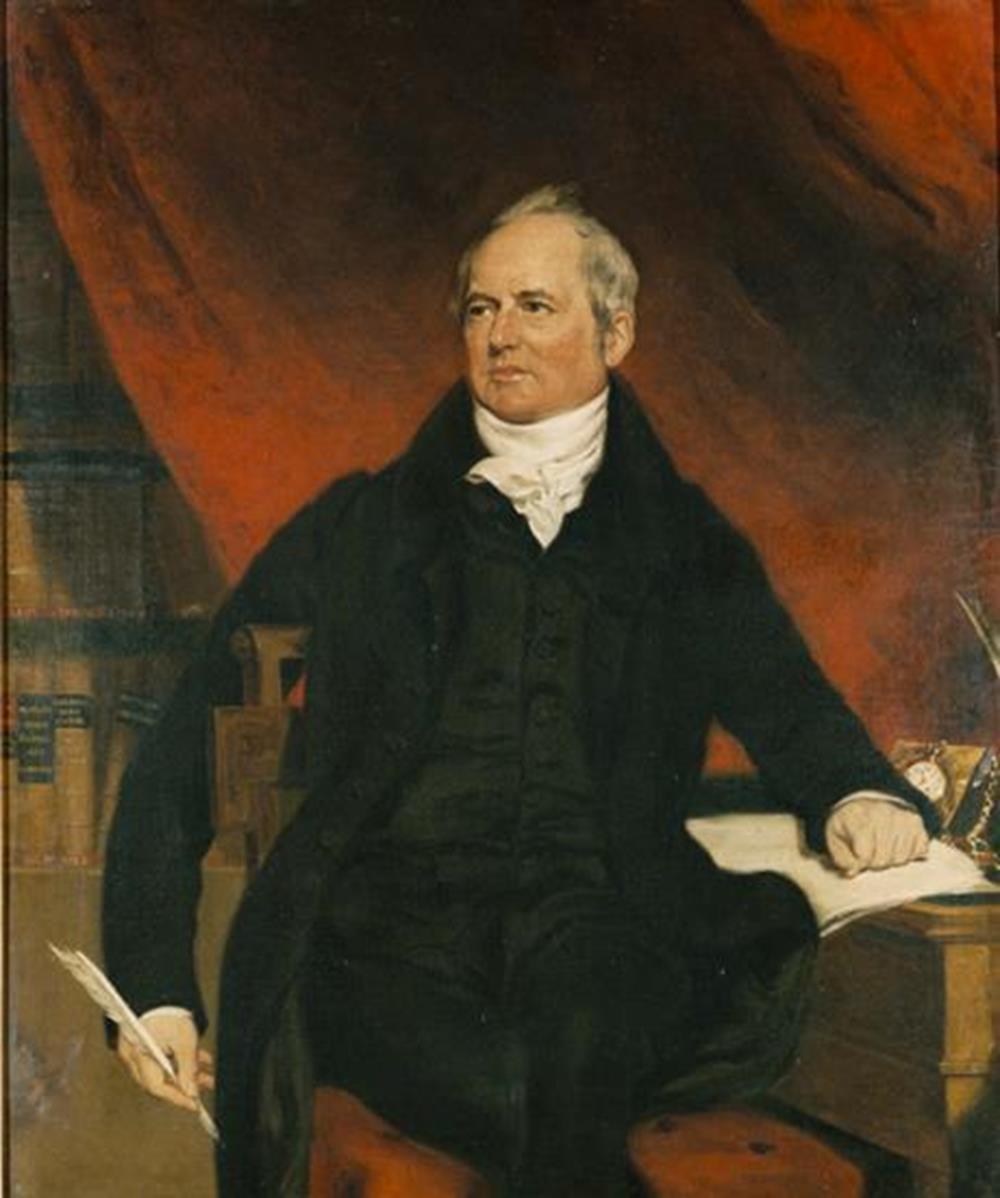
John Rickman championed the UK census as we know it today. He gave 12 reasons for conducting a UK census including:
• ‘the intimate knowledge of any country must form the rational basis of legislation and diplomacy’
• ‘an industrious population is the basic power and resource of any nation, and therefore its size needs to be known’
• ‘the number of men who were required for conscription to the militia in different areas should reflect the area’s population’
• ‘there were defence reasons for wanting to know the number of seamen’
• ‘the need to plan the production of corn and thus to know the number of people who had to be fed’
• ‘a census would indicate the Government’s intention to promote the public good’
• ‘the life insurance industry would be stimulated by the results.’
Rickman organized censuses every ten years from 1801.
The records from 1801 to 1831 were statistical only – a headcount of each household, and the number of people in three categories of work.
From 1841, the census began to gather details about individuals.
top of page
Collecting census data
During the week before the official census day, an “enumerator” gave the head of each household a form to complete – “The Schedule”.
The schedule included instructions on how to fill in each entry.
The week after the census day, the enumerator collected the forms – sometimes amending or adding entries.
The accuracy of the entries relied on the honesty of each household. This cartoon from “Punch” alludes to one problem.

It was very often the lady of the house who took responsibility for the census form.
There are some colourful examples of women taking advantage of their position as Census form fillers.
In 1881, one woman gave her title as ‘Maid of Allwork’, her occupation as ‘slave’ and a handicap as ‘scarcity of money’.
The enumerator then transcribed these original schedules into an enumerator’s record book – in pencil. The original schedule forms were destroyed.
The enumerator’s record books are held in the General Register Office for Scotland.
top of page
Viewing the census records today
In February 1952, the record books in the Register Office were microfilmed by the Genealogical Society, Salt Lake City, Utah, USA. The Dunfermline Carnegie Library has copies of these microfilms for the various parishes in and around Dunfermline, for the censuses from 1841 to 1901. They can be viewed in the Reading Room.
The records for all of Scotland from 1841 to 1921 are available on-line from Scottish Census Records
Please note that records are only made available 100 years after each census. (Traditionally, Scottish census records were open to the public after 81 years. However In 1974, the UK government imposed a 100-year closure rule on post-1901 census records.)
top of page
Viewing the Census records for North Queensferry Peninsula on the NQHT website.
Defining “North Queensferry Peninsula”
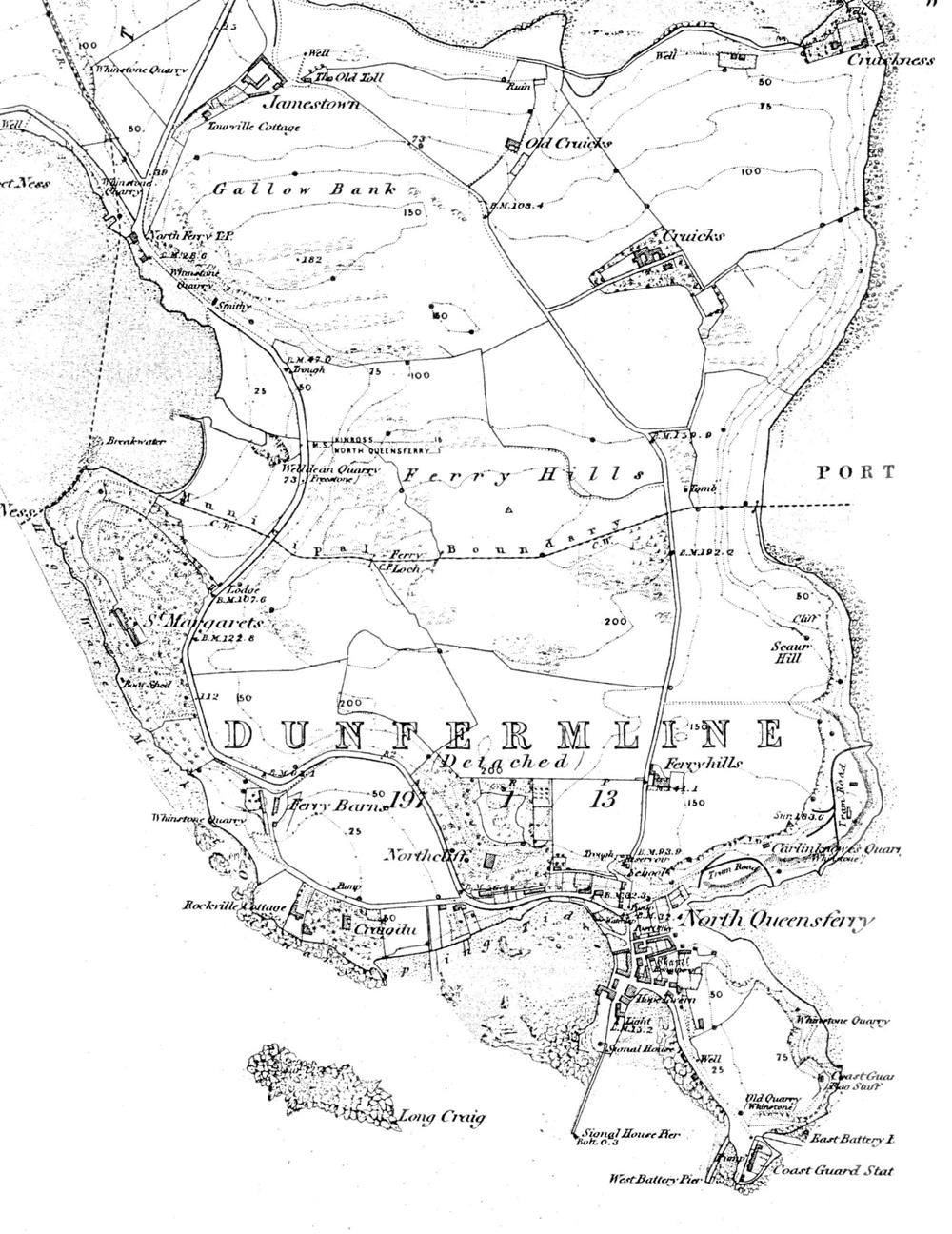
This OS map from 1856 shows a Municipal Boundary running across the peninsula, separating the Parish of Inverkeithing above the line, from the Parish of Dunfermline (detached) below the line.
The 1841 census treated the entire peninsula as one district.
Later censuses covered “the village” in one district – Dunfermline detached – with “the rest of the peninsula” included in the wider Inverkeithing district.
The following pages on this website each contain a combined sets of records that cover the peninsula for each year from 1841 to 1921.
Census 1841
Census 1851
Census 1861
Census 1871
Census 1881
Census 1891
Census 1901
Census 1911
Census 1921
These pages show images of the original census records, and also an easier-to-read transcript of the records.
Searching the census records for North Queensferry
There is also a Census Search page which makes it much easier to search for the census records for an individual, or family.
And a page which lists all of the Names and Surnames from the census records. It is probably a good idea to have a look at this list of names and surnames, page before using the Search Page.
The Census Search page contains a table which is a condensed transcript of all of the records from 1841 to 1911. That is a lot of data, so the page will take several seconds to load – don’t panic!
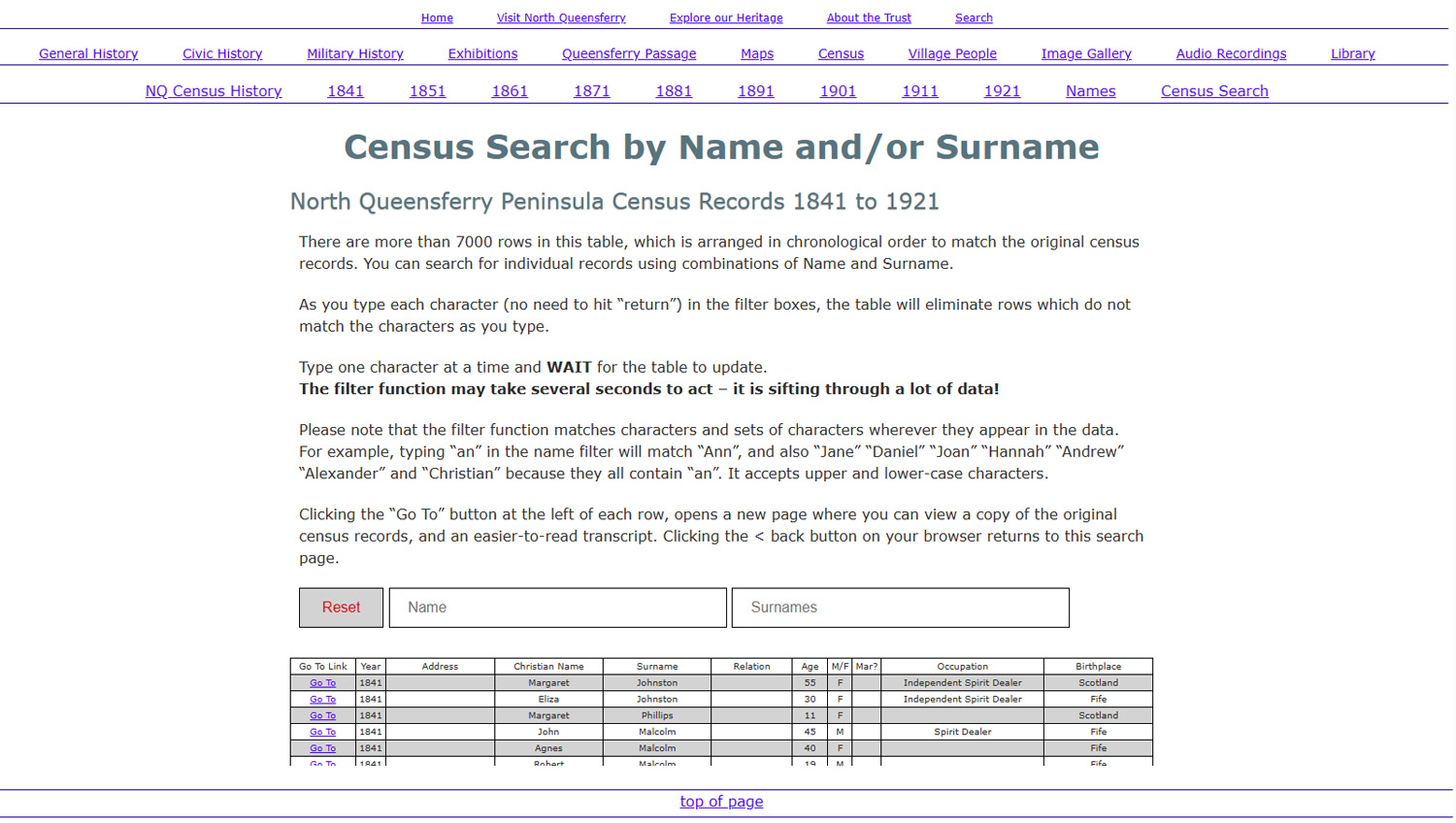
There are more than 7000 rows in this table, which is arranged in chronological order to match the original census records.
You can search for individual records using combinations of Name and Surname.
As you type letters in the filter boxes, the table will eliminate rows which do not include the characters you have entered.
Enter one character at a time – and wait!
The filter function may take several seconds to act – it is sifting through a lot of data!
Please note that the filter function matches characters and sets of characters wherever they appear in the data. For example, typing “an” in the Name filter will match “Ann”, and also “Jane” “Daniel” “Joan” “Hannah” “Andrew” “Alexander” and “Christian” because they all contain “an”.
The filter accepts upper and lower-case characters.
Clicking the reset button removes all filters, or you can just use back-space in each box to correct typos.
Clicking the “Go To” button at the left of each row, opens a new page where you can a copy of the original census records.
From the original record page, you can click the < back button on your browser to return to the search page (with all filters removed).
Here is an example
of filtering the data to look for “Peter Penny”

There are thre individuals named Peter Penny in this table.
One was 1 year old in 1851, then 10 in 1861, 20 in 1871, 31 in 1881, 39 in 1891, 50 in 1901, 59 in 1911 and 70 in 1921.
the second was 3 in 1881 and 13 in 1891
and the third was 10 in 1921
Clicking on “Go To” against either of the 1881 entries . . .
. . . opens a webpage showing an image of the original records.

and below this is the easier-to-read transcript.

Here you can see that the three Peters are related. The first two are father and son. The third is the son of Peter’s other son William Penny, living in Brunton’s Buildings (now Forthside Terrace.)